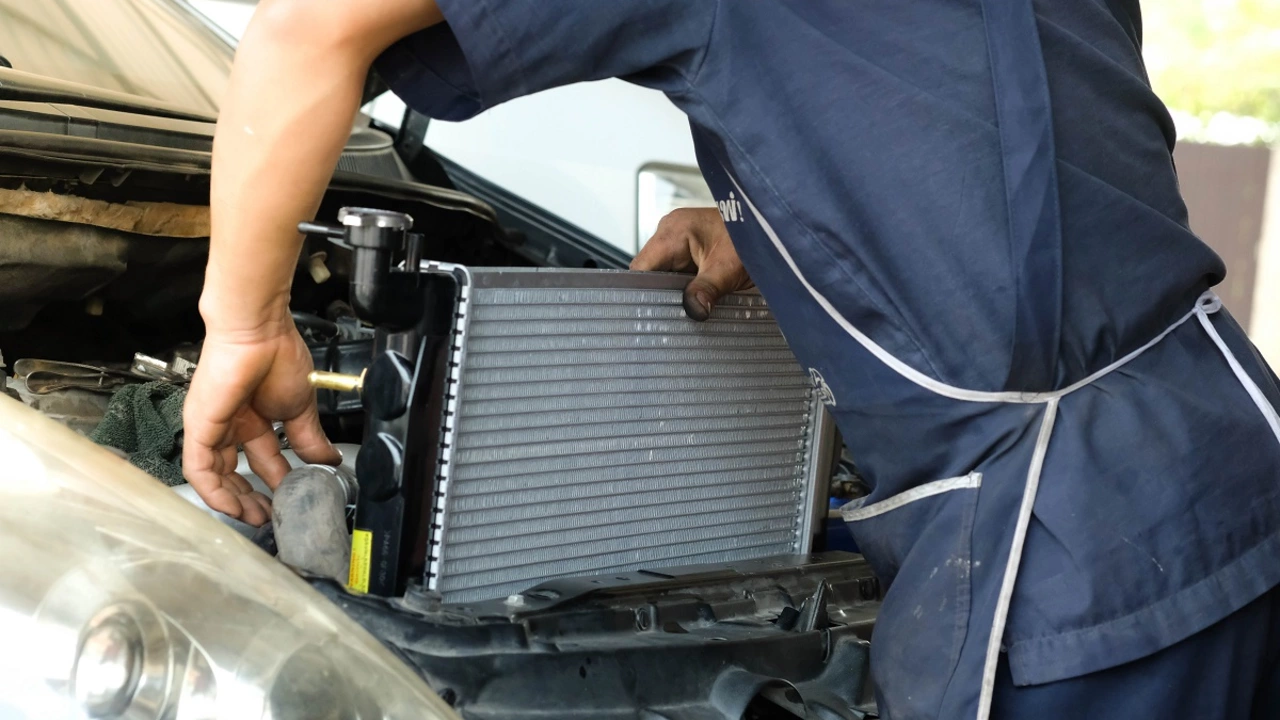Automotive Repair & Maintenance: Easy Tips to Keep Your Car Healthy
Got a car you rely on daily? Then you probably know that a nagging problem can ruin your plans fast. The good news is most issues are avoidable with a little routine care. Below you’ll find straight‑forward steps anyone can follow, no jargon, just results.
Everyday Checks That Save Money
First thing’s first – look at your fluids. Open the hood, pull the dipstick, and check oil level and color. Low or dirty oil means the engine is working harder and can wear out sooner. Do the same with coolant: a clear, bright green or pink fluid indicates it’s doing its job. If you ever notice an object floating inside the radiator, like a small piece of debris, it can block coolant flow, cause overheating, and even crack the radiator. A quick visual check while the engine is cold can spot that issue before it turns into a costly repair.
Next up, tire health. Press down on each tire with your palm; you should feel a firm, even surface. Use a simple gauge to confirm pressure matches the sticker inside the driver’s door. Under‑inflated tires wear unevenly, hurt fuel economy, and raise the risk of a blowout. Rotate your tires every 5,000–7,000 km to keep wear balanced.
Tackling Common Problems Yourself
Brakes are another area where a little attention goes a long way. When you press the pedal, you should feel a steady, firm resistance. Any squeal, pulsation, or spongy feeling means the pads or rotors need a look‑over. Swapping out brake pads is a doable DIY job with basic tools, but if the rotors are scored, call a pro.
The battery is quiet but essential. Check the terminals for corrosion – a white, powdery build‑up can be brushed off with a battery brush and a little baking soda. If the car hesitates to start on a cold morning, you might need a simple load test or a new battery.
Changing the air filter is a weekend‑quick task. Locate the filter box, pop it open, and replace the old paper with a fresh one. A clean filter improves airflow, boosts fuel efficiency, and reduces engine strain.
Don’t overlook your windshield wipers. Streaky wipes or squeaking sounds mean the rubber is drying out. Swap the blades as the seasons change – it takes under ten minutes and improves visibility in rain.
When something feels off and you’re not comfortable fixing it, don’t guess. Note the symptoms, check for obvious issues (like fluid leaks or loose belts), and call a trusted workshop. A clear description helps the mechanic diagnose faster and can save you time and money.
Keeping your car in good shape isn’t about spending hours in a garage. It’s about a few quick checks each week and timely swaps of wear items. Stick to these habits, and you’ll enjoy a smoother ride, lower bills, and fewer surprise breakdowns.

What are the implications of an object in a car radiator?
Having an object in your car radiator can lead to serious issues. It can obstruct the flow of coolant, causing your engine to overheat and potentially leading to costly repairs or even engine failure. Additionally, the object might damage the radiator itself, causing leaks. It's important to regularly check and maintain your car's radiator to prevent such problems. If you suspect something's amiss, get it checked by a professional immediately.
View more